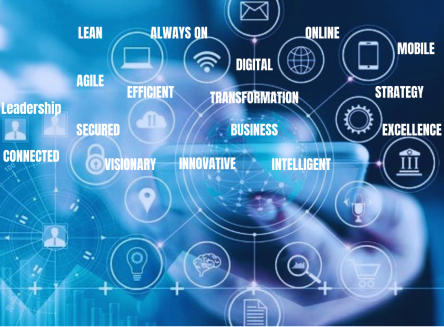Cloud computing is opening doors for businesses and organisations to have IT services available as utility service with predictable cost and quality as per customer needs and pay for use models while still allowing flexibility of needs based selection of SaaS, PaaS, IaaS service and its components.
IT is becoming an essential part of companies DNA and Fabric as organisations realize that ICT services and solutions will give them a competitive edge to achieve their growth using real time information and insights as well as making products and services available using digital presence. Organisations are awakening and becoming to redefine their strategies to become a real time company, at the core of this is IT but now its not just another IT project but a business transformation enabled with word class IT solutions and services.
In most organisations ICT services are already served as Shared Service Model for past decade and organisations have become mature in having ICT services delivered using shared service model. The move from Shared Service Model towards Cloud Computing is a natural progression where organisations go from Shared Services to Utility Services model.
Internet and the need for doing things online and real time is now well embedded in most organisations as well as consumers. This is leading towards having ICT services being available through internet around the clock and in a secured manner. Could Computing Services and Service Model is fulfilling this need.
Forrester Research white paper of he Evolution Of Cloud Computing Markets” of july 2010 shows that organisations are spending around USD 2.4 Trillion for ICT services. Cloud computing is opening up a new space where the organisations will transition towards. A big part of the overall ICT spending would be moving towards cloud computing services. A macro shift of services already began from year 2009 and its expected to grow rapidly in coming year.
The report from delloite consulting of year 2009 suggests that cloud computing services would grow to the size of USD 1 Trillion in current decade and would continue to grow further. Cloud Services offerings from major players like Microsoft – Office 360, Azure and SAP – Business By Design and Business One Cloud and Amazon EC2 and S3 will lead the transition of Traditional ICT services and solutions to Cloud SaaS, PaaS and IaaS services.
Cloud Computing Services are on number 4 position of IDC’s Top 10 Predictions report of 2012. IDC report suggests that Spending on public and private cloud services, and the building of those services (the “cloud arms dealer” opportunity), will reach USD $60 billion. Amazon will join the $1 billion IT vendor club, and the strategic focus in the cloud will shift from infrastructure to application platforms and the race to build the largest portfolios and ecosystems around those platforms.
